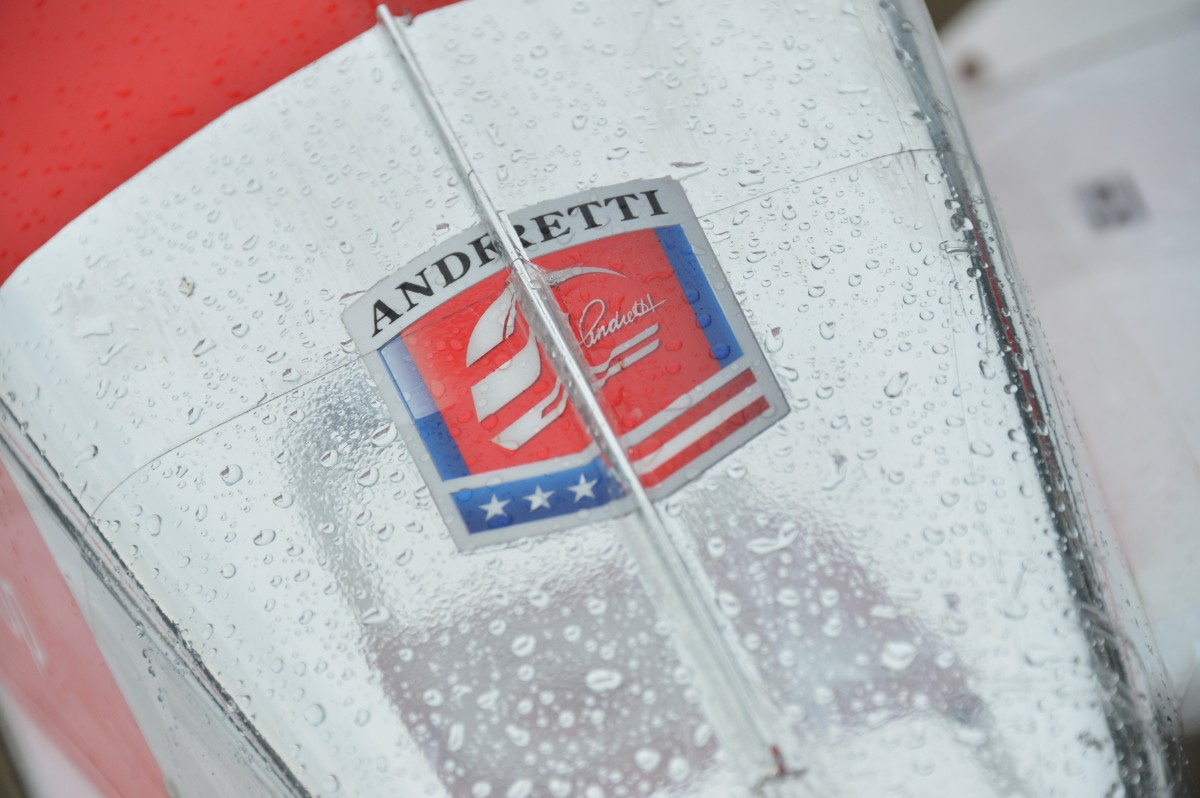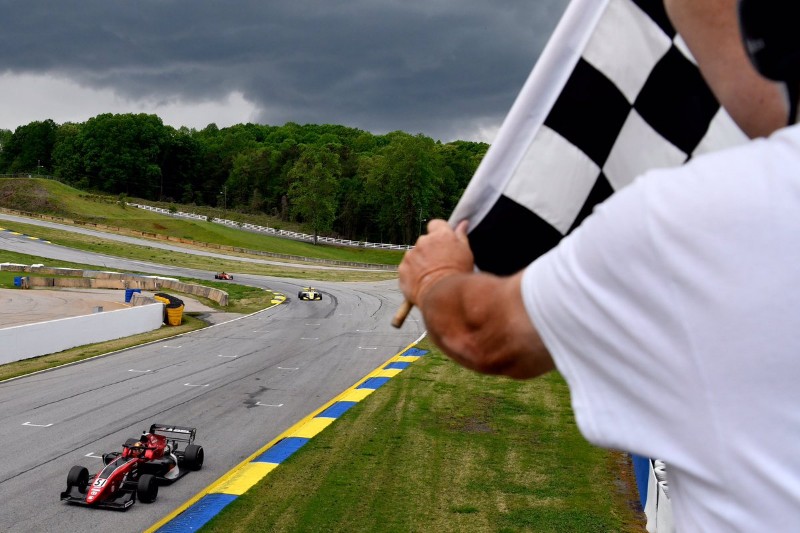
Photos: FR Americas
The coronavirus pandemic has cast a heavy human and financial cost everywhere it’s spread, but difficulties experienced by some has led to opportunity for others – as seen on the American single-seater scene
Motorsport is not immune to the problems of the wider world, and nowhere has this been more obvious than in the wake of COVID-19’s global spread. Alongside many stories of cancellations, closures and the (hopefully temporary) ending of jobs and dreams in the industry, fortune has fallen into the hands of one previously struggling – and fairly unknown – series.
Formula 3 Americas changed its name to Formula Regional Americas in the off-season, and is now boasting a healthy contingent of teams and drivers who are aiming for the Honda-backed entry to Indy Lights that comes with title success.
Ironically, it was the cancellation of Lights’ 2020 season – enabling IndyCar and its stronger performing Road to Indy supports to fill out their seasons in a compressed calendar – that has proven to be so beneficial to FRegional Americas.
Both series had low grid sizes last year – with Lights averaging nine cars and FRegional an improved 11.8 starters per race.
Road to Indy CEO Dan Andersen, who manages Indy Lights and owns the Indy Pro 2000 and USF2000 series below it, recently told Formula Scout that FRegional’s presence was “unnecessary” due to its supposed splitting of a fairly small group of drivers who would have otherwise all raced in Lights, but it’s the three-year-old rival series that has won out this year.
Three of the five teams and four of the 10 drivers that had committed to racing in Lights this season have now transferred their efforts to FRegional, including IndyCar giant Andretti Autosport, which is a huge coup for the series. Suddenly, a series that was perhaps lacking in both quality and quantity finds itself filling with both.

Photo: Indianapolis Motor Speedway
While this does appear like a step down for many of the drivers – and realistically it is – the only other alternative option in American single-seaters would be a literal step down to IP2000. That seems illogical unless you were a driver stepping up to Lights for 2020 a little prematurely. Formula Scout understands none of the remaining Lights drivers will be making that move.
And if these drivers weren’t going to race in FRegional, the only other real option would be to find the money to move into IndyCar – something that would be very risky at the best of times and certainly not wise when many of this year’s events are expected to be shortened affairs with reduced practice time. It would be the ultimate sink or swim move, and could unnecessarily stick a driver’s career on the line should it go wrong.
FRegional’s 2020 calendar – like so many others – remains in flux. However, the series is set to run at some of America’s finest road courses. A couple of circuits not visited by the Road to Indy adds to the challenge for the Lights refugees – they will have to master the high-speed Virginia International Raceway, Sebring’s famous rough and concrete-laden surface and Homestead-Miami Speedway’s inner course in race trim as well as Mid-Ohio and Barber Motorsports Park’s undulating terrain.
Grid sizes should remain in the high teens after what is likely to be a season-best 19 cars for this weekend’s Mid-Ohio season opener, which is a remarkable turnaround for a series that averaged 4.7 starters in its inaugural season in 2018.
It is a very international field this year, as it has become a landing point for drivers from series across the globe as well as an effective next step for those from the supporting United States Formula 4 championship.
It does still fall short through the SCCA-sanctioned series not rubbing shoulders (in a metaphorical sense because of social distancing) with the likes of IMSA-run series or (unsurprisingly) IndyCar.

But there will be more eyes on it in 2020 with its expanded and more reputable entry list. It may even pave the way for a long-term relationship for teams that would not have thought about entering were it not for Lights’ cancellation and the budget-squeezing pandemic.
With heaps of series rookies (in both teams and drivers) and some well-rated single-seater returnees, that makes highlighting the standout drivers from a season set to be very unpredictable all the more difficult…
Formula Scout’s five drivers to watch
By Rachel Hillman and Craig Woollard
Joshua Car AUSTRALIA Crosslink/Kiwi Motorsport
2019: US F4 champion (6 wins, 1 pole, 5 fastest laps) Karts 7th in USA SuperNationals – X30 Senior
Reigning US F4 champion Joshua Car will be hoping to follow in the footsteps of his predecessors Kyle Kirkwood and Dakota Dickerson by stepping up a category and winning the title at his first attempt.
Consistency has always been key for Car, and this is helped by moving up together with the Crosslink/Kiwi Motorsport team that ran him in F4. Despite their applicable knowledge, the combination is an exciting unknown at the F3 level.
The Australian was victorious at all but one track last year, and to be fair to him Circuit of the Americas is an outlier among old-school circuits, and he certainly isn’t afraid of fighting his way through the field if he qualifies poorly.
Linus Lundqvist SWEDEN Global Racing Group
2019: 5th in Euroformula (1 pole, 1 fastest lap), Euroformula Winter Series (1 win)
This year will be Linus Lundqvist’s third F3 season and there is no doubt that he will impress once again, despite being unfamiliar with the American circuits.
The 2018 BRDC British F3 champion has been on the radar for some time, and 2020 will be key if he wishes to pursue a career stateside like fellow Swedes Marcus Ericsson and Felix Rosenqvist.
Even though FRegional Americas is on the FIA’s pyramid to Formula 1, it seems clear that Lundqvist has his sights set on using it as a launchpad into Indy Lights and ultimately IndyCar.

Photo: Fotospeedy
Victor Franzoni BRAZIL Newman Wachs Racing
2019: 26th in IMSA
Victor Franzoni is one of the drivers making a step down to FRegional having previously competed and won in Indy Lights, before a brief stint in IMSA’s DPi prototype class and its GT3-level GTD category last year.
The 24-year-old is one of the oldest on the grid, and the extra years of experience could be the key ingredient for success.
Newman Wachs Racing will be making its series debut, and has a long association with Franzoni. Its raced only in USF2000 of late, which could be a hindrance to success, but was a title-winning squad in the comparable Atlantics series in 2009.
Danial Frost SINGAPORE Andretti Autosport
2019: 5th in IP2000 (2 wins, 1 pole, 1 fastest lap) 2018-19: 7th in MRF Challenge (1 win, 1 fastest lap)
Danial Frost’s appearance on the entry list came as a welcome surprise, as well as the arrival of Andretti Autosport, after Indy Lights’ cancellation.
Frost will become the first Asian driver in the series, and he comes off the back of a race-winning IP2000 campaign. In the past he’s also been competitive in MRF Challenge, Formula Masters China, USF2000 and F4 South East Asia.
Going by his 2019 record, it probably won’t be long before the teenager captures his first win in the series.
Santiago Urrutia URUGUAY HMD Motorsports
2019: 3rd in TCR Europe (1 fastest lap), one race in Super TC2000
Joining FRegional Americas may look like an illogical step down for Santiago Urrutia, but with three seasons of finishing in the top three in Indy Lights he will definitely be a driver that his competitors can learn from.
He made a well judged switch to touring cars last year with Audi, but still harboured IndyCar ambitions, and in the winter announced a surprise return to Lights with the expanding HMD Motorsports.
It’s certainly a welcome return to single-seaters for the 23-year-old, who may well contest a fourth Lights season in 2021 if he is champion this year and has won in F3 in Europe, and it would be no surprise to see him up front immediately.

Photo: Indianapolis Motor Speedway